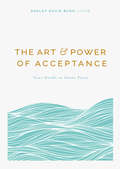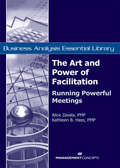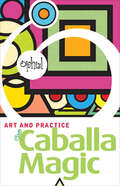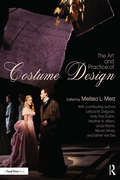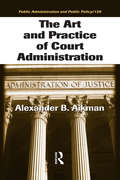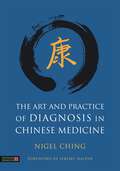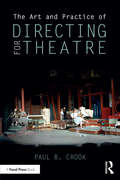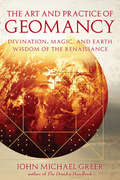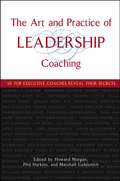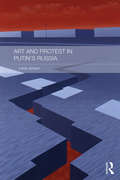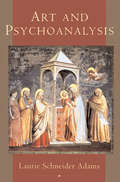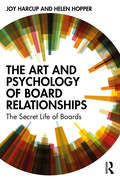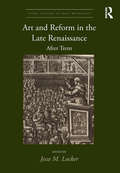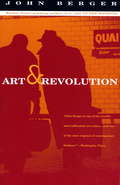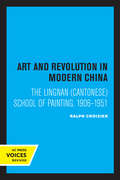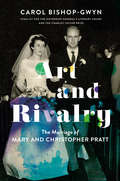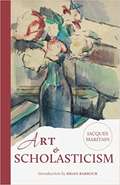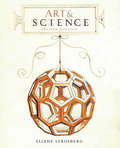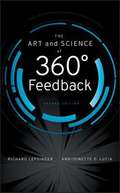- Table View
- List View
Art and Posthumanism: Essays, Encounters, Conversations (Art After Nature)
by Cary WolfeA sustained engagement between contemporary art and philosophy relating to our place in, and responsibility to, the nonhuman world How do contemporary art and theory contemplate the problem of the &“bio&” of biopolitics and bioart? How do they understand the question of &“life&” that binds human and nonhuman worlds in their shared travail? In Art and Posthumanism, Cary Wolfe argues for the reconceptualization of nature in art and theory to turn the idea of the relationship between the human and the planet upside down.Wolfe explores a wide range of contemporary artworks—from Sue Coe&’s illustrations of animals in factory farms and Eduardo Kac&’s bioart to the famous performance pieces of Joseph Bueys and the video installations of Eija-Liisa Ahtila, among others—examining how posthumanist theory can illuminate, and be illuminated by, artists&’ engagement with the more-than-human world. Looking at biological and social systems, the question of the animal, and biopolitics, Art and Posthumanism explores how contemporary art rivets our attention on the empirically thick, emotionally charged questions of &“life&” and the &“living&” amid ecological catastrophe.One of the foremost theorists of posthumanism, Wolfe pushes that philosophy out of the realm of the purely theoretical to show how a posthumanist engagement with particular works and their conceptual underpinnings help to develop more potent ethical and political commitments.
The Art and Power of Acceptance: Your Guide to Inner Peace
by Ashley Davis BushImagine the relief of not being stuck in anger, resentment or regret. Imagine the emotional freedom of stopping the battle with yourself, other people, your circumstances and even your past. Imagine the peace of mind you would have if you stopped fighting the current of life and instead flowed with it, effortlessly. Exploring the journey from resistance to alignment to possibility, Ashley Davis Bush (a psychotherapist with over 30 years' experience and author of eight self-help books) debunks the idea that acceptance is merely passive apathy or resignation. In The Art and Power of Acceptance she introduces you to the simple but radical practice of self-compassion as the key to disarming resistance, expanding positive emotions and allowing you to move easily with "what is". She invites you to see how acceptance paradoxically leads to powerful, lasting change. Using personal and clinical stories, practical suggestions, and evidence-based research, Ashley illuminates a new way of being with life. Choose acceptance today and discover first hand how it leads to your emotional freedom.
The Art and Power of Acceptance: Your Guide to Inner Peace
by Ashley Davis BushImagine the relief of not being stuck in anger, resentment or regret. Imagine the emotional freedom of stopping the battle with yourself, other people, your circumstances and even your past. Imagine the peace of mind you would have if you stopped fighting the current of life and instead flowed with it, effortlessly. Exploring the journey from resistance to alignment to possibility, Ashley Davis Bush debunks the idea that acceptance is merely passive apathy or resignation. She introduces you to the simple but radical practice of self-compassion as the key to disarming resistance, expanding positive emotions and allowing you to move easily with "what is". She invites you to see how acceptance paradoxically leads to powerful, lasting change. Using personal and clinical stories, practical suggestions, and evidence-based research, Ashley illuminates a new way of being with life. Choose acceptance today and discover first hand how it leads to your emotional freedom.
The Art and Power of Facilitation: Running Powerful Meetings
by Alice Zavala Pmp Kathleen B. Hass PMPA Volume of the Business Analysis Essential Library Series The heart of the business analyst's role is to drive various constituencies through processes to achieve consensus on the needs of the business. Successfully facilitating meetings — whether a one-on-one interview or a larger presentation — is essential to business analysis. The Art and Power of Facilitation: Running Powerful Meetings provides powerful tools that the business analyst can use to negotiate through the myriad of meetings, informal work sessions, and formal workshops that are necessary to develop business requirements.
The Art and Practice of Caballa Magic
by OphielUnlock the mysteries of an ancient magical practice with this accessible introduction to the practical applications of Caballa.While most books on Caballa Magic offers only theoretical explanations, Ophiel’s classic text teaches readers how to use it. As part of Ophiel’s Art and Practice series, Art and Practice of Caballa Magic begins with a brief history of of this ancient wisdom. It then examines the correspondences of the Tree of Life and its symbolism. Ophiel also provides a unique interpretation of the Three Pillars, relating them to past, present, and future. As always, Ophiel’s accessible, conversational prose offers fresh insights and new understanding to occult students and interested readers alike. This volume provides clear instructions for practical, productive work using the symbols of the Tree of Life daily.
The Art and Practice of Costume Design
by Melissa L. MerzIn The Art and Practice of Costume Design, a panel of seven designers offer a new multi-sided look at the current state and practice of theatrical costume design. Beginning with an exploration of the role of a Costume Designer, the subsequent chapters analyse and explore the psychology of dress, the principles and elements of design, how to create costume renderings, and collaboration within the production. The book also takes a look at the costume shop and the role of the designer within it, and costume design careers within theatrical and fashion industries.
The Art and Practice of Court Administration (Public Administration and Public Policy)
by Alexander B. AikmanThe Art and Practice of Court Administration explores the context in which court administration is practiced and identifiesthe qualities and skills court administrators need. Divided into two major parts, part one covers the history of the field and how courts are organized, environmental conditions in which court administration is practiced, special impact on courts of the elected clerk of court, prosecutor, and the sheriff, the judge’s administrative roles, as well as how a judge’s judicial and administrative roles work with management. The second part reviews a new approach for setting and adjusting priorities among the multiple functions courts perform—the Hierarchy of Court Administration. It defines priorities, analyzes court roles that establish mission critical functions, and sets an agenda for advancing courts throughout this century. Thorough and complete, The Art and Practice of Court Administration details how courts operate, the court administrator’s position and responsibilities, and approachestoissues and problems.
The Art and Practice of Diagnosis in Chinese Medicine
by Jeremy Halpin Nigel ChingThis textbook on diagnosis in Chinese medicine is unique in its clarity and accessibility. Divided into two sections, it is a comprehensive diagnostic manual. The first section explains how to collect and collate the information required to formulate a diagnosis and is divided into four approaches: visual, palpation, interrogation and listening/smelling. The second section describes the various diagnostic models in Chinese medicine, including The Eight Principles; zangfu organ pattern; the Six stages, four levels and san jiao; the twelve regular channels and eight extraordinary vessels; and the Five Phases.
The Art and Practice of Directing for Theatre
by Paul B. CrookThe formation and communication of vision is one of the primary responsibilities of a director, before ever getting to the nuts and bolts of the process. The Art and Practice of Directing for Theatre helps the young director learn how to discover, harness, and meld the two. Providing both a practical and theoretical foundation for directors, this book explores how to craft an artistic vision for a production, and sparks inspiration in directors to put their learning into practice. This book includes: Guidance through day-to-day aspects of directing, including a director’s skillset and tools, script analysis, and rehearsal structure. Advice on collaborating with production teams and actors, building communication skills and tools, and integrating digital media into these practices. Discussion questions and practical worksheets covering script analysis, blocking, and planning rehearsals, with downloadable versions on a companion website.
The Art and Practice of Directing for Theatre
by Paul B. CrookThe formation and communication of vision is one of the primary responsibilities of a director, before ever getting to the nuts and bolts of the process. The Art and Practice of Directing for Theatre, Second Edition helps the young director learn how to discover, harness, and meld the two.Providing both a practical and theoretical foundation for directors, this book explores how to craft an artistic vision for a production, and sparks inspiration in directors to put their learning into practice. This new edition is fully revised to address changes in theatre since the Covid pandemic, new technology, intimacy direction, and inclusive practices. It features: Guidance through day-to-day aspects of directing, including a director’s skillset and tools, script analysis, and rehearsal structure. Advice on collaborating with production teams and actors, building communication skills and tools, and integrating digital media into these practices. Discussion questions and practical worksheets covering script analysis, blocking, and planning rehearsals. Updated references to reflect the changes in the theatre community and profession since the original writing. Updated examples of studies and technology. This book is written for students in Theatre Directing courses, along with new and aspiring theatrical directors. The Art and Practice of Directing for Theatre, Second Edition includes access to downloadable worksheets, available at www.routledge.com/9781032619514.
The Art and Practice of Geomancy
by John Michael GreerHave you ever lost an important object? Are you taking on a new job? Looking for buried treasure? The Art and Practice of Geomancy teaches readers how to divine the answers to life's everyday questions about health, luck, new jobs, and love, as well as those less mundane tasks such as finding buried treasure, predicting the weather, being released from prison, and identifying secret enemies. Greer delivers to readers an ancient system of divination in an easy-to-use form requiring little more than a pen and a piece of paper. Using a system of counting odd and even numbers--from a deck of cards, a roll of the dice, or even by hitting sand or dirt with a stick to generate patterns--readers learn how to cast their own geomantic chart. And for those who wish to delve further, he offers exercises for geomantic meditation and ritual magic. The Art and Practice of Geomancy will appeal to pagans, followers of the Western Mystery tradition, scholars of folk magic and divination, and anyone who wants to take their past, present, and future into their own hands.
The Art and Practice of Leadership Coaching
by Marshall Goldsmith Howard Morgan Phil HarkinsLeadership coaching has become vitally important to today?s most successful businesses. The Art and Practice of Leadership Coaching is a landmark resource that presents a variety of perspectives and best practices from today?s top executive coaches. It provides valuable guidance on exactly what the best coaches are now doing to get the most out of leaders, for now and into the future. Revealing core philosophies, critical capabilities, and the secrets of coaching success, this one-of-a-kind guide includes essays from fifty top coaches, including Ken Blanchard and Frances Hesselbein. Packed with cutting-edge ideas and proven best practices, this is the definitive source of information for anyone dealing with coaching.
Art and Protest in Putin's Russia (Routledge Contemporary Russia and Eastern Europe Series)
by Lena JonsonThe Pussy Riot protest, and the subsequent heavy handed treatment of the protestors, grabbed the headlines, but this was not an isolated instance of art being noticeably critical of the regime. As this book, based on extensive original research, shows, there has been gradually emerging over recent decades a significant counter-culture in the art world which satirises and ridicules the regime and the values it represents, at the same time putting forward, through art, alternative values. The book traces the development of art and protest in recent decades, discusses how art of this kind engages in political and social protest, and provides many illustrations as examples of art as protest. The book concludes by discussing how important art has been in facilitating new social values and in prompting political protests.
Art And Psychoanalysis (Icon Editions)
by Laurie Schneider AdamsA pioneering overview of art and psychoanalysis that shows how each field can enrich and enlarge the other.
The Art and Psychology of Board Relationships: The Secret Life of Boards
by Joy Harcup Helen HopperThe relationships within boards can make or break an organisation, but well-functioning relationships take skill and effort to maintain. This book looks at the psychology behind individual and group behaviour and offers tactics and power tools to help make a success of your board career. The book shares advice and practical tips from 40 experienced board members from the worlds of corporates, the public sector and charities on how to spot and manage complex dynamics. And each chapter ends with techniques for unlocking tricky board relationships that you can put into practice immediately. The authors examine case studies and explore topics such as psychodynamics, cognitive behavioural psychology and neuroscience for insights into how boards react under pressure. They then demonstrate how to practise the ART of managing board relationships by increasing Awareness, Relating constructively to others, and choosing Tactics to ease tensions and foster collaboration. The Art and Psychology of Board Relationships: The Secret Life of Boards reveals why board relationships lie at the heart of organisational success – and how you can use them to gain competitive edge. It is essential reading for current and aspiring board members, coaches, facilitators and anyone with an interest in boardroom dynamics.
Art and Reform in the Late Renaissance: After Trent (Visual Culture in Early Modernity)
by Jesse M. LockerDrawing on recent research by established and emerging scholars of sixteenth- and seventeenth-century art, this volume reconsiders the art and architecture produced after 1563 across the conventional geographic borders. Rather than considering this period a degraded afterword to Renaissance classicism or an inchoate proto-Baroque, the book seeks to understand the art on its own terms. By considering artists such as Federico Barocci and Stefano Maderno in Italy, Hendrick Goltzius in the Netherlands, Antoine Caron in France, Francisco Ribalta in Spain, and Bartolomeo Bitti in Peru, the contributors highlight lesser known "reforms" of art from outside the conventional centers. As the first text to cover this formative period from an international perspective, this volume casts new light on the aftermath of the Renaissance and the beginnings of "Baroque."
Art and Revolution
by John BergerIn this prescient and beautifully written book, John Berger examines the life and work of Ernst Neizvestny, a Russian sculptor whose exclusion from the ranks of officially approved Soviet artists left him laboring in enforced obscurity to realize his monumental and very public vision of art. But Berger's impassioned account goes well beyond the specific dilemma of the pre-glasnot Russian artist to illuminate the very meaning of revolutionary art. In his struggle against official orthodoxy--which involved a face-to-face confrontation with Khruschev himself--Neizvestny was fighting not for a merely personal or aesthetic vision, but for a recognition of the true social role of art. His sculptures earn a place in the world by reflecting the courage of a whole people, by commemorating, in an age of mass suffering, the resistance and endurance of millions. "Berger is probably our most perceptive commentator on art...A civilized and stimulating companion no matter what subject happens to cross his mind."--Philadelphia InquirerFrom the Trade Paperback edition.
Art and Revolution in Modern China: The Lingnan (Cantonese) School of Painting, 1906-1951 (Center for Chinese Studies, UC Berkeley #29)
by Ralph CroizierThis title is part of UC Press's Voices Revived program, which commemorates University of California Press’s mission to seek out and cultivate the brightest minds and give them voice, reach, and impact. Drawing on a backlist dating to 1893, Voices Revived makes high-quality, peer-reviewed scholarship accessible once again using print-on-demand technology. This title was originally published in 1988.
Art and Rhetoric in Roman Culture
by Jaś Elsner Michel MeyerRhetoric was fundamental to education and to cultural aspiration in the Greek and Roman worlds. It was one of the key aspects of antiquity that slipped under the line between the ancient world and Christianity erected by the early Church in late antiquity. Ancient rhetorical theory is obsessed with examples and discussions drawn from visual material. This book mines this rich seam of theoretical analysis from within Roman culture to present an internalist model for some aspects of how the Romans understood, made and appreciated their art. The understanding of public monuments like the Arch of Titus or Trajan's Column or of imperial statuary, domestic wall painting, funerary altars and sarcophagi, as well as of intimate items like children's dolls, is greatly enriched by being placed in relevant rhetorical contexts created by the Roman world.
Art and Risk in Ancient Yoruba
by Suzanne Preston BlierIn this book, Suzanne Preston Blier examines the intersection of art, risk and creativity in early African arts from the Yoruba center of Ife and the striking ways that ancient Ife artworks inform society, politics, history and religion. Yoruba art offers a unique lens into one of Africa's most important and least understood early civilizations, one whose historic arts have long been of interest to local residents and Westerners alike because of their tour-de-force visual power and technical complexity. Among the complementary subjects explored are questions of art making, art viewing and aesthetics in the famed ancient Nigerian city-state, as well as the attendant risks and danger assumed by artists, patrons and viewers alike in certain forms of subject matter and modes of portrayal, including unique genres of body marking, portraiture, animal symbolism and regalia. This volume celebrates art, history and the shared passion and skill with which the remarkable artists of early Ife sought to define their past for generations of viewers.
Art and Rivalry: The Marriage of Mary and Christopher Pratt
by Carol Bishop-GwynThe unauthorized biography of Canada's most famous artist couple and the rivalry that drove them.She painted as if with pure light, radiant colours making quotidian kitchen scenes come alive with sublimated drama. He painted like clockwork, each stroke precise and measured with exquisite care, leaving no angle unchecked and no subtlety of tone unattended. Some would say Mary Pratt was fire and Christopher, ice. And yet Newfoundland's Frida Kahlo and Diego Rivera (or Jackson Pollack and Lee Krasner...) presented their marriage as a portrait of harmony and balance. But balance off the canvas rarely makes great art, and the Pratts' art was spectacular. As a youth at Mount Allison University in New Brunswick, Mary pursued her future husband, a prodigious art talent, and supported his determination to study painting instead of medicine. They married and removed themselves to a Newfoundland outport where his painting alone provided the means to raise a family. But as Mary's own talents became evident and she sought her own hours at the easel, when not raising their four children, and as rumours of Christopher's affair with a young model spread, the Pratts' harmonious exterior slowly cracked, to scandal in Newfoundland and fascination across the country. A marriage ended, and gave way to a furious competition for dominance in Canadian art.
Art and Scholasticism: with Other Essays
by Jacques MaritainArt and Scholasticism is Jacques Maritain’s classic argument for an objective view of both art and the artist. Maritain provides a strong dissenting perspective on the lazy, self-flattering artistic assumptions of the past two centuries. For this new edition, Brian Barbour’s Introduction gives a fascinating summary of Maritain’s philosophical background, his conversion to Catholicism and work in Thomistic thought, and the importance of Art and Scholasticism in understanding aesthetics—be it in poetry, painting, music, or literature. Art and Scholasticism is a must-read for lovers of art and wisdom alike
Art and Science
by Eliane StrosbergToday, art and science are often defined in opposition to each other: one involves the creation of individual aesthetic objects, and the other the discovery of general laws of nature. Throughout human history, however, the boundaries have been less clearly drawn: knowledge and artifacts have often issued from the same source, the head and hands of the artisan. And artists and scientists have always been linked, on a fundamental level, by their reliance on creative thinking.Art and Science is the only book to survey the vital relationship between these two fields of endeavor in its full scope, from prehistory to the present day. Individual chapters explore how science has shaped architecture in every culture and civilization; how mathematical principles and materials science have underpinned the decorative arts; how the psychology of perception has spurred the development of painting; how graphic design and illustration have evolved in tandem with methods of scientific research; and how breakthroughs in the physical sciences have transformed the performing arts. Some 265 illustrations, ranging from masterworks by Dürer and Leonardo to the dazzling vistas revealed by fractal geometry, complement the wide-ranging text.This new edition of Art and Science has been updated to cover the ongoing convergence of art and technology in the digital age, a convergence that has led to the emergence of a new type of creator, the "cultural explorer" whose hybrid artworks defy all traditional categorization. It will make thought-provoking reading for students and teachers, workers in creative and technical fields, and anyone who is curious about the history of human achievement.
Art and Science in Breeding
by Margaret DerryChickens are now the most scientifically engineered of livestock. How have the methods used by geneticists differed from those employed by domestic breeders over time? Art and Science in Breeding details the relationship between farm practices and agricultural genetics in poultry breeding from 1850 to 1960.Margaret E. Derry traces the history and organization of chicken breeding in North America, from craft approaches and breeding as an 'art,' to the conflicts that had emerged between traditional and scientific methods by the 1940s. Derry assesses links between the 'scientific' revolution of chicken farming and the development of corporate breeding as a modern, international industry. Using poultry as a case study for the wider narrative of agricultural genetics, Art and Science in Breeding adds considerable knowledge to a rapidly growing field of inquiry.
The Art and Science of 360 Degree Feedback
by Anntoinette D. Lucia Richard LepsingerMore and more organizations are using 360-degree feedback to provide an opportunity to talk about key changes. This second edition of the best-selling book includes research and information that more accurately reflects who is using 360-degree feedback and where and how it is being used. In addition, the authors incorporate information about the impact of advances in technology and the more global and virtual work environment. This new edition includes case examples, tips, and pointers on preparing 360-degree feedback and information on how to implement it.

